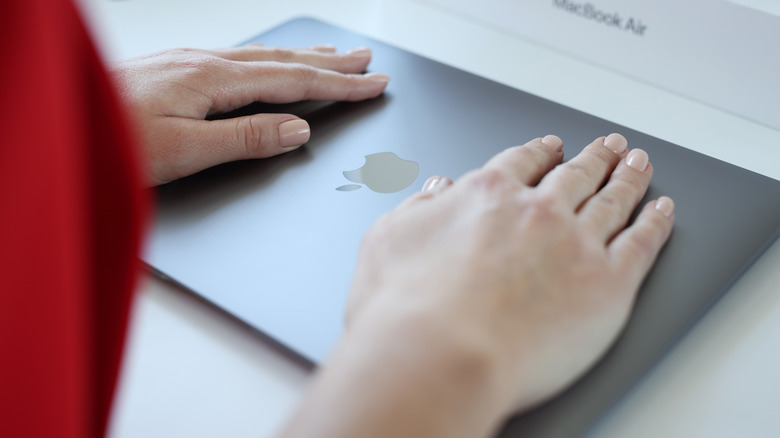What Is The Difference Between Putting A MacBook To Sleep And Shutting It Down?
When it is finally time to step away from your MacBook, is it better to shut down the device completely or simply leave it in sleep mode? While it may seem to many like a simple choice, both offer various advantages, making it worthwhile to explore and learn the differences between the two options.
As far as sleep mode is concerned, it's not just a matter of the screen going dark. Nearly every component inside is powered down or put into a low-power mode. But as soon as the user returns, they can jump right back into whatever they were doing, almost as if they never left. Whether it's gotten a full eight hours or a mere 20-minute nap, the convenient thing about a sleeping MacBook is that when it's time to get up, the Apple laptop will be ready to go in seconds. Sleep mode also helps prevent the wear and tear that comes with constantly turning the device on and off.
For anyone looking to go above and beyond maintaining your MacBook's battery and power state, it's probably important to know that sleep mode doesn't require a lot of energy. In fact, it uses very little battery power compared to the juice it takes to shut down and power up the device. While it's pretty evident that there are perks to letting one's personal computer snooze, users shouldn't sleep on the merits of shutting the MacBook down.
Shutting down has perks sleep mode doesn't
Even though sleep mode has a lot going for it, shutting down the MacBook can provide its own set of blessings. For starters, once it's completely been turned off, it is no longer generating any kind of power, meaning no electricity is being used, which is good for those looking to better regulate their power bill.
The efficient manner in which sleep mode allows people to pick up where they left off without much wait or hassle is good for those frequently visiting their device. But for people who will be away from the keyboard for an extended period of time, choosing to shut it down is an obvious choice that won't put extra strain on the machine.
There is also the notorious heat factor to consider. Like most personal computers, MacBooks can get quite warm when left on for long periods, and one of the best ways to cool things down before it gets too hot to handle is to chill with the shutdown option over sleep mode.
Choosing to shut down your MacBook can also give it a fresh start, like hitting the reset button to clear out RAM. Not only does this help the device get back to working at its pique performance, but it can also provide a much-needed nudge to any processes, programs, or apps that might not be working correctly back in gear. There is no denying there are several differences between the shutdown and sleep mode options, but which method should users subscribe to?
Should MacBooks be shut down or allowed to sleep?
As far as which one is the proper procedure, shut down or sleep mode, there is really no right or wrong way to go about it. The choice will mostly stem from a user's preferences or circumstances. However, while it's been established that shutting down the computer frequently isn't a great idea, most outlets recommend restarting a MacBook every few days at the least to keep things running efficiently.
But it appears that many users don't even follow that tip and have seemed to surprisingly not have any issues. u/dmaterialized posted on Reddit, "I've been sleeping Mac laptops and not shutting them down since 1999. Many of my systems only restart for a software update and have not been shut down for [five-plus] years." u/000GKP wrote, "2014 MacBook Pro. I have never turned it off in [eight] years, because why would I?" and u/DarkAngel5666 shared, "My previous MacBook literally stayed in sleep mode for the most part of its [six] years life without any issue."
While the two choices certainly have their fair share of differences, it's good for users to have a reasonable comprehension of both when it comes to getting a better handle on managing power, battery health, and other important aspects of the MacBook.


